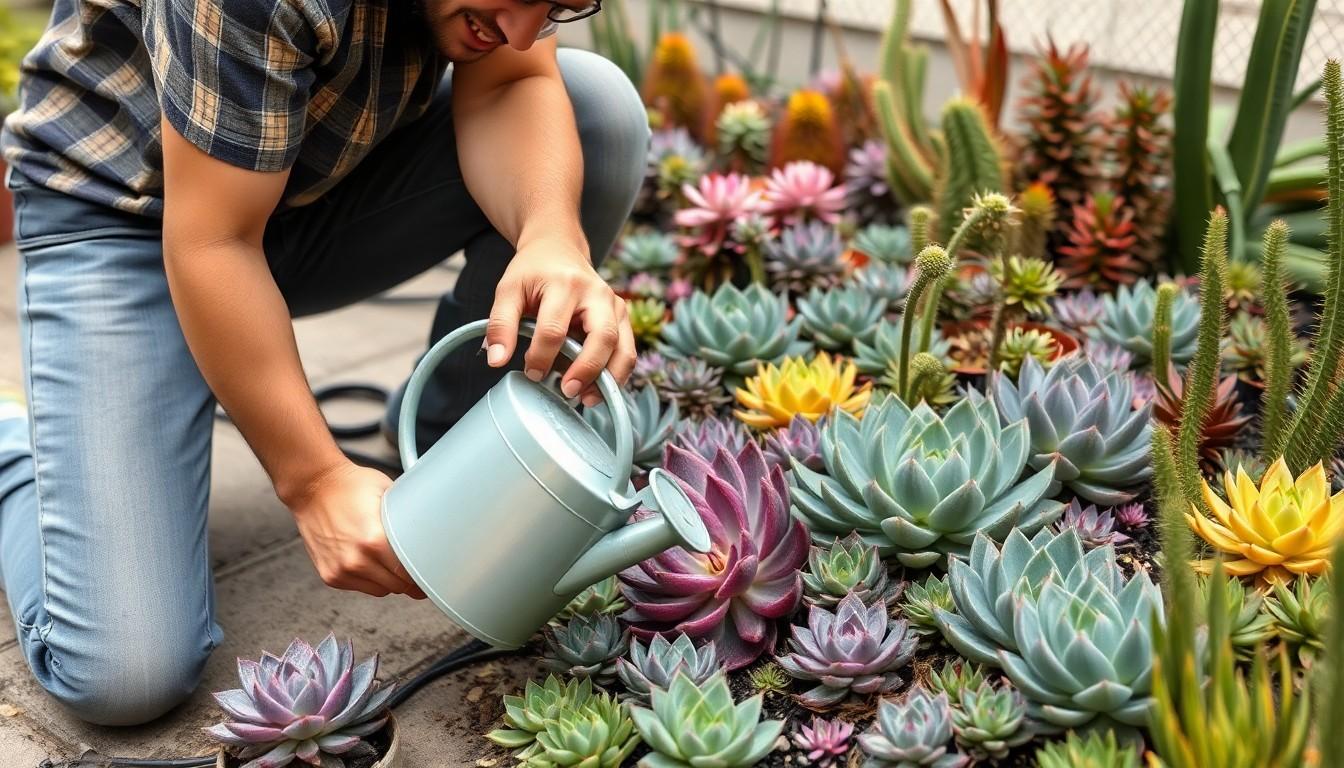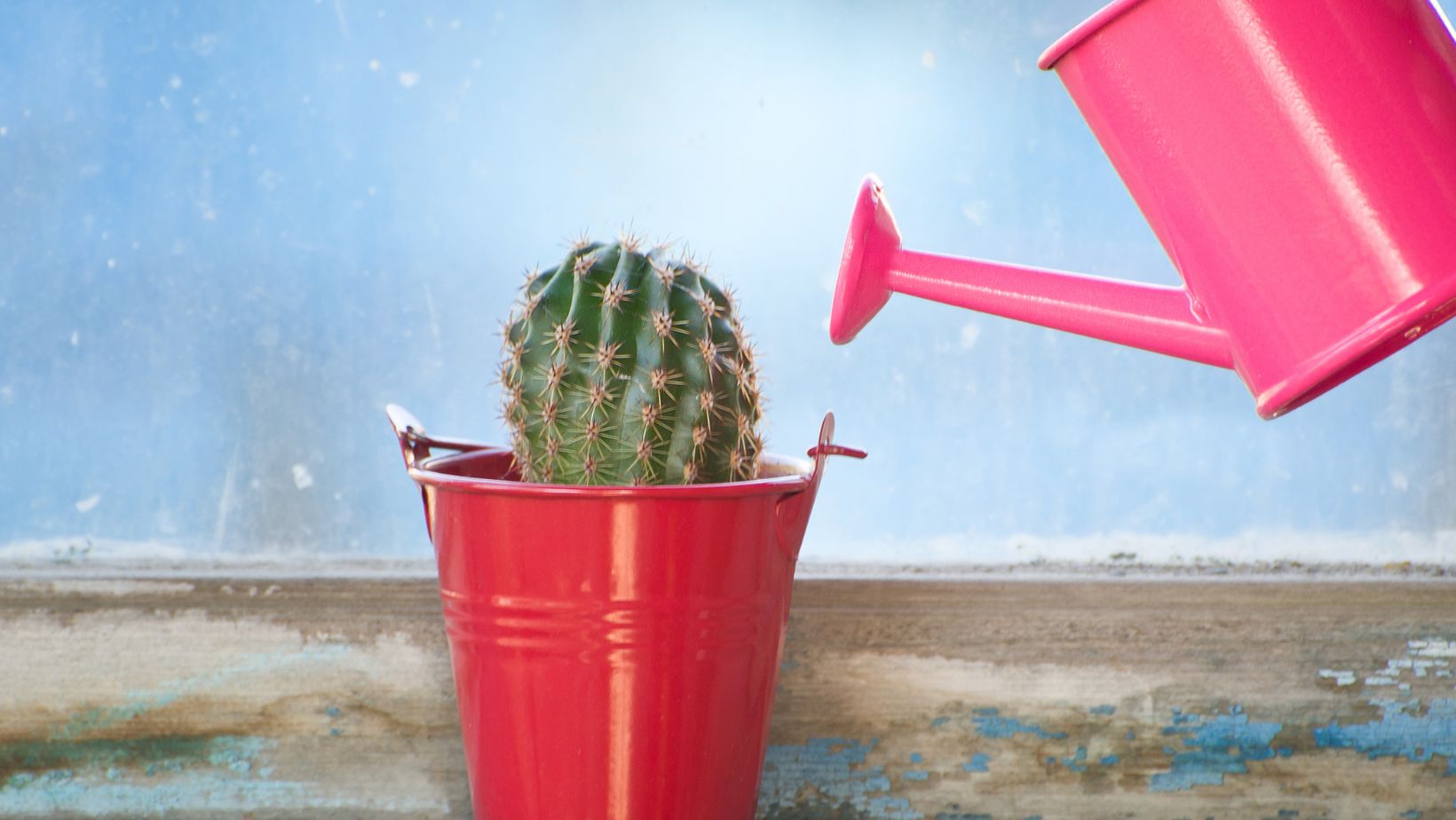Succulents are the low-maintenance darlings of the plant world, but even these hardy little champions need a bit of TLC when it comes to hydration. Imagine a cactus sipping a piña colada on a beach—sounds great, right? But too much water and they’ll be gasping for air instead of soaking up the sun.
Understanding Succulent Watering Needs
Succulents thrive with minimal attention, but understanding their watering needs is crucial. Factors like their environment and plant type determine how much water they require.
Factors Influencing Watering Frequency
Sunlight exposure plays a key role in watering frequency. Succulents placed in bright, direct light often dry out faster compared to those in shaded areas. Soil type also matters; well-draining soil retains moisture differently from dense soil. Plant size impacts hydration requirements; larger succulents store more water. Climate conditions affect water needs as well; high temperatures lead to increased evaporation. Lastly, seasonal changes result in fluctuating watering schedules. During growing seasons, succulents may need more water than during dormancy.
Signs of Overwatering and Underwatering
Identifying signs of overwatering helps maintain succulent health. Yellowing leaves signal excess moisture, while mushy stems indicate root rot. Conversely, underwatering presents different symptoms. Leaves may shrivel or develop a wrinkled appearance as the plant lacks moisture. Dropping leaves can also indicate underwatering. Regular observation of these signs ensures the right balance of hydration for optimal succulent growth.
Best Practices for Watering Succulents

Maintaining the right moisture level is crucial for succulent health. Specific watering practices ensure these plants thrive without issues.
The Right Amount of Water
A deep soak promotes healthy growth, encouraging roots to absorb moisture. Succulents typically need watering every two weeks during growing seasons, while winter requires significantly less. When saturating the soil, ensure it drains thoroughly; succulent roots dislike standing water. A general rule of thumb is to water until excess moisture seeps through the drainage hole. Observe each plant’s individual needs, as different varieties may require different amounts.
Watering Techniques
Using the soil’s dryness as a guide aids in effective watering. Stick a finger into the soil about an inch deep to check for moisture—if it feels dry, it’s time to water. Pour water directly onto the soil instead of the leaves; this prevents fungal diseases and promotes a healthier root system. Employing techniques like bottom watering allows the plant to absorb moisture gradually. Regularly adjusting the watering schedule based on environmental changes enhances overall plant health.
Seasonal Considerations
Understanding seasonal changes is essential for effective succulent care. These hardy plants require adjustments in watering practices throughout the year.
Summer Watering Guidelines
In summer, succulents thrive due to higher temperatures and increased sunlight. Watering every one to two weeks encourages healthy growth, as evaporation rates rise during hot months. It’s best to check soil moisture before watering; if the top inch feels dry, it’s time to hydrate. Soaking the soil thoroughly ensures roots receive adequate moisture. Containers with drainage holes allow excess water to escape, preventing root rot. Observe succulents for signs of distress; plump, firm leaves indicate proper hydration. Adjust frequency based on individual plant types and environmental conditions for optimal health.
Winter Watering Adjustments
Winter introduces cooler temperatures and shorter days, impacting succulent watering needs. Typically, watering frequency decreases to about once every three to four weeks. Many succulents enter dormancy, requiring less moisture. Before watering, always check the soil; it should be completely dry before providing hydration. A light watering is preferable, as excess moisture can lead to root rot. Succulents often remain dormant, so observing leaves for signs of shriveling will guide adjustments. Be cautious and prioritize drainage to protect these resilient plants during the dormant season.
Common Mistakes to Avoid
Avoiding common mistakes is essential for maintaining healthy succulents. Focus on recognizing overwatering and soil selection to ensure optimal care.
Overwatering Dangers
Overwatering poses significant risks to succulents. Roots may rot due to excessive moisture in the soil. Recognizing signs like yellowing leaves or mushy stems is crucial for addressing this issue early. Many gardeners mistakenly water succulents on a strict schedule. Adjusting based on environmental conditions ensures better outcomes. Checking the soil’s dryness before watering helps prevent these dangers. Observing the plant’s overall health contributes to a more tailored watering approach.
Choosing the Wrong Soil
Choosing the wrong soil affects succulent growth negatively. Using standard potting soil can retain too much moisture, leading to root rot. A well-draining mix specifically designed for succulents encourages proper hydration levels. Look for blends containing perlite or coarse sand, which help with drainage. Ensuring the right soil consistency supports healthy root development. Regularly assessing soil conditions is vital for preventing issues. This simple step enhances overall plant health and longevity.
Conclusion
Maintaining the right watering routine is essential for succulent health. By understanding their unique needs and adjusting care based on seasonal changes and environmental conditions, it’s possible to keep these resilient plants thriving. Regularly observing signs of distress will help in fine-tuning watering practices.
With the right approach to hydration and proper drainage, succulents can flourish, bringing beauty and life to any space. Remember that less can often be more when it comes to watering. By striking the perfect balance, anyone can enjoy the vibrant charm of succulents for years to come.

